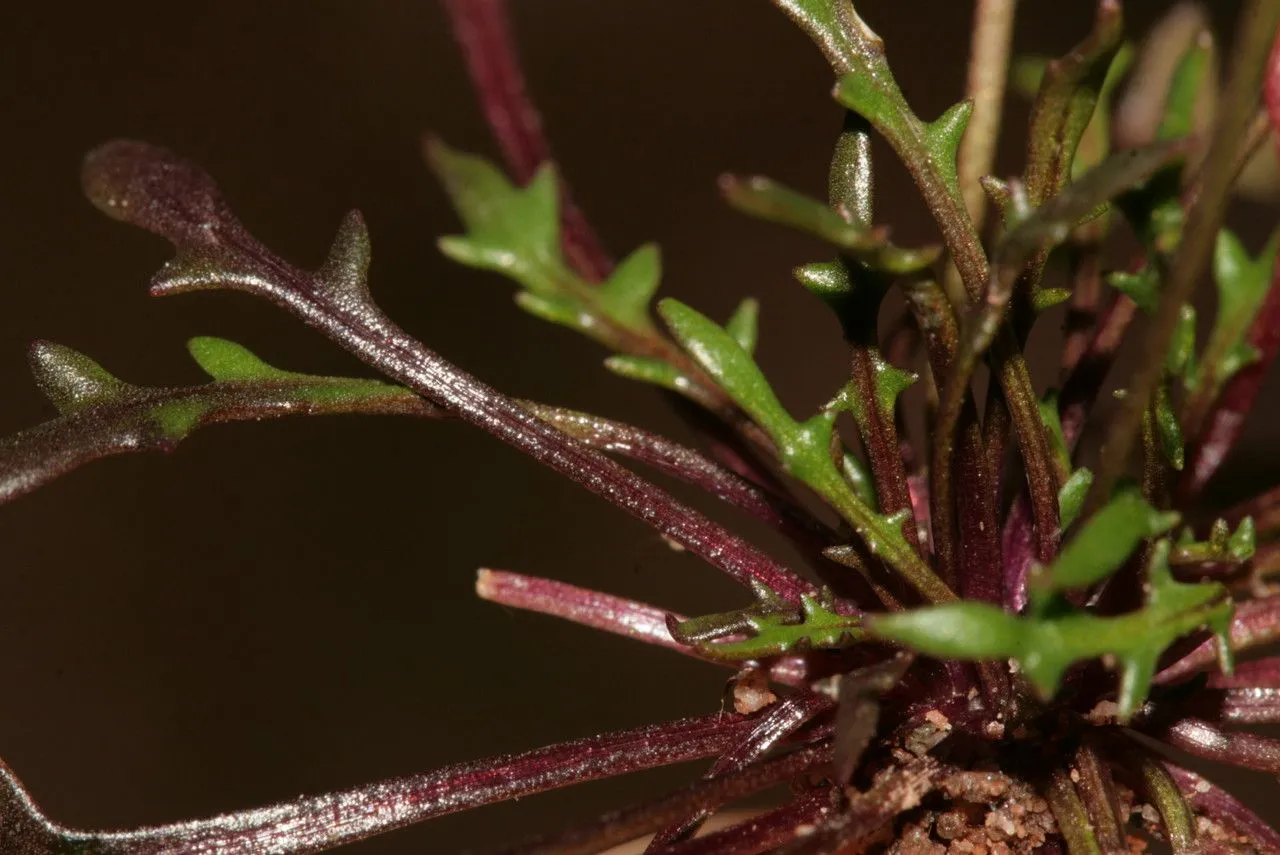
Author: (J.P.Bergeret) Thell.
Bibliography: Repert. Spec. Nov. Regni Veg. 10: 289 (1912)
Year: 1912
Status: accepted
Rank: species
Genus: Teesdalia
Vegetable: False
Observations: Madeira, Medit.
Lesser shepherdscress, scientifically known as Teesdalia coronopifolia, is a fascinating plant species belonging to the Brassicaceae family. This plant species was first described and classified in the early 20th century, with its nomenclature noted in the Repertorium Specierum Novarum Regni Vegetabilis, a reputable botanical journal, published in 1912.
Teesdalia coronopifolia is characterized by its delicate and modest appearance, typical of many plants within the Brassicaceae family, which is also home to more well-known members like cabbages, mustards, and cresses. The plant’s common name, Lesser shepherdscress, hints at its humble stature and prevalence in pastoral settings, possibly being a common sight in shepherds’ grazing lands.
The physical structure of Lesser shepherdscress includes slender stems and small, white flowers that form in clusters, which are typical characteristics of the family. These flowers eventually give way to seed pods that aid in the plant’s propagation. The foliage is fine and somewhat feathery, which helps to differentiate it from other plants in similar habitats.
Geographically, Lesser shepherdscress can be observed in the regions of Madeira and the Mediterranean. These locations provide the mild climate and well-drained soils that are conducive to the plant’s growth and development. Its presence in these regions underlines its adaptability to different environmental conditions, from coastal areas to inland terrains.
In ecological terms, this plant plays its part in contributing to the biodiversity of the areas it inhabits. By being part of the local flora, it provides a certain level of sustenance and habitat for various insects and possibly other small wildlife. Furthermore, like many in the Brassicaceae family, it might have potential uses in herbal remedies and as a minor food resource, although its primary recognition is within botanical studies.
Lesser shepherdscress’s history and classification were meticulously documented by J.P. Bergeret, with further contributions by Thellung, whose work provided the scientific community with foundational knowledge about this species. This documentation has ensured that the plant is well-cataloged for future study and conservation efforts.
In conclusion, Teesdalia coronopifolia, or Lesser shepherdscress, is a modest yet significant member of the Brassicaceae family. Its presence in the Mediterranean and Madeira highlights its ecological flexibility and importance. This plant remains a subject of interest within botanical circles, symbolizing the intricate beauty and complexity of the plant kingdom.
Eng: lesser shepherdscress
En: Lesser shepherdscress
Ca: Tesdàlia coronopifòlia
Fr: Téesdalie corne-de-cerf, Teesdalie à feuilles en corne de cerf
He: טיסדליה שסועה
It: Teesdalia a foglie di coronopus
© copyright of the Board of Trustees of the Royal Botanic Gardens, Kew.
© copyright of the Board of Trustees of the Royal Botanic Gardens, Kew.
© copyright of the Board of Trustees of the Royal Botanic Gardens, Kew.
Taken Apr 29, 2017 by Tela Botanica − Liliane ROUBAUDI (cc-by-sa)
Taken Feb 28, 2015 by Tela Botanica − Errol Vela (cc-by-sa)
Taken Feb 28, 2015 by Tela Botanica − Errol Vela (cc-by-sa)
Taken Apr 29, 2017 by Tela Botanica − Liliane ROUBAUDI (cc-by-sa)
Taken Mar 18, 2020 by Renaud Brochiero (cc-by-sa)
Taken Feb 20, 2022 by Mallol Camprubí Albert (cc-by-sa)
Taken Apr 16, 2020 by Renaud Brochiero (cc-by-sa)
Taken Mar 11, 2020 by Prieta Javier (cc-by-sa)
Taken Mar 12, 2021 by Sébastien franchini (cc-by-sa)
Taken Mar 18, 2020 by Renaud Brochiero (cc-by-sa)
Taken Apr 29, 2017 by Tela Botanica − Liliane ROUBAUDI (cc-by-sa)
Taken Apr 29, 2017 by Tela Botanica − Liliane ROUBAUDI (cc-by-sa)
Taken Apr 29, 2017 by Tela Botanica − Liliane ROUBAUDI (cc-by-sa)
Taken Apr 29, 2017 by Tela Botanica − Liliane ROUBAUDI (cc-by-sa)
Taken Mar 18, 2020 by Renaud Brochiero (cc-by-sa)
Taken Feb 28, 2015 by Tela Botanica − Errol Vela (cc-by-sa)
Taken Feb 28, 2015 by Tela Botanica − Errol Vela (cc-by-sa)
Taken Apr 29, 2017 by Tela Botanica − Liliane ROUBAUDI (cc-by-sa)
Taken Apr 29, 2017 by Tela Botanica − Liliane ROUBAUDI (cc-by-sa)
Taken Apr 29, 2017 by Tela Botanica − Liliane ROUBAUDI (cc-by-sa)
Taken Jan 1, 1970 by Photoflora – L’Abbé COSTE (©)
Taken Apr 15, 2013 by Photoflora – Benoit BOCK (©)
Growth habit>: Forb/herb
Bloom months: [‘mar’, ‘apr’, ‘may’]
Family: Myrtaceae Author: (F.Muell.) K.D.Hill & L.A.S.Johnson Bibliography: Telopea 6: 402 (1995) Year: 1995 Status:…
Family: Rubiaceae Author: Pierre ex A.Froehner Bibliography: Notizbl. Bot. Gart. Berlin-Dahlem 1: 237 (1897) Year:…
Family: Sapindaceae Author: Koidz. Bibliography: J. Coll. Sci. Imp. Univ. Tokyo 32(1): 38 (1911) Year:…
Family: Asteraceae Author: A.Gray Bibliography: Pacif. Railr. Rep.: 107 (1857) Year: 1857 Status: accepted Rank:…
Family: Fabaceae Author: Medik. Bibliography: Vorles. Churpfälz. Phys.-Ökon. Ges. 2: 398 (1787) Year: 1787 Status:…
Family: Aspleniaceae Author: (Cav.) Alston Bibliography: Bull. Misc. Inform. Kew 1932: 309 (1932) Year: 1932…